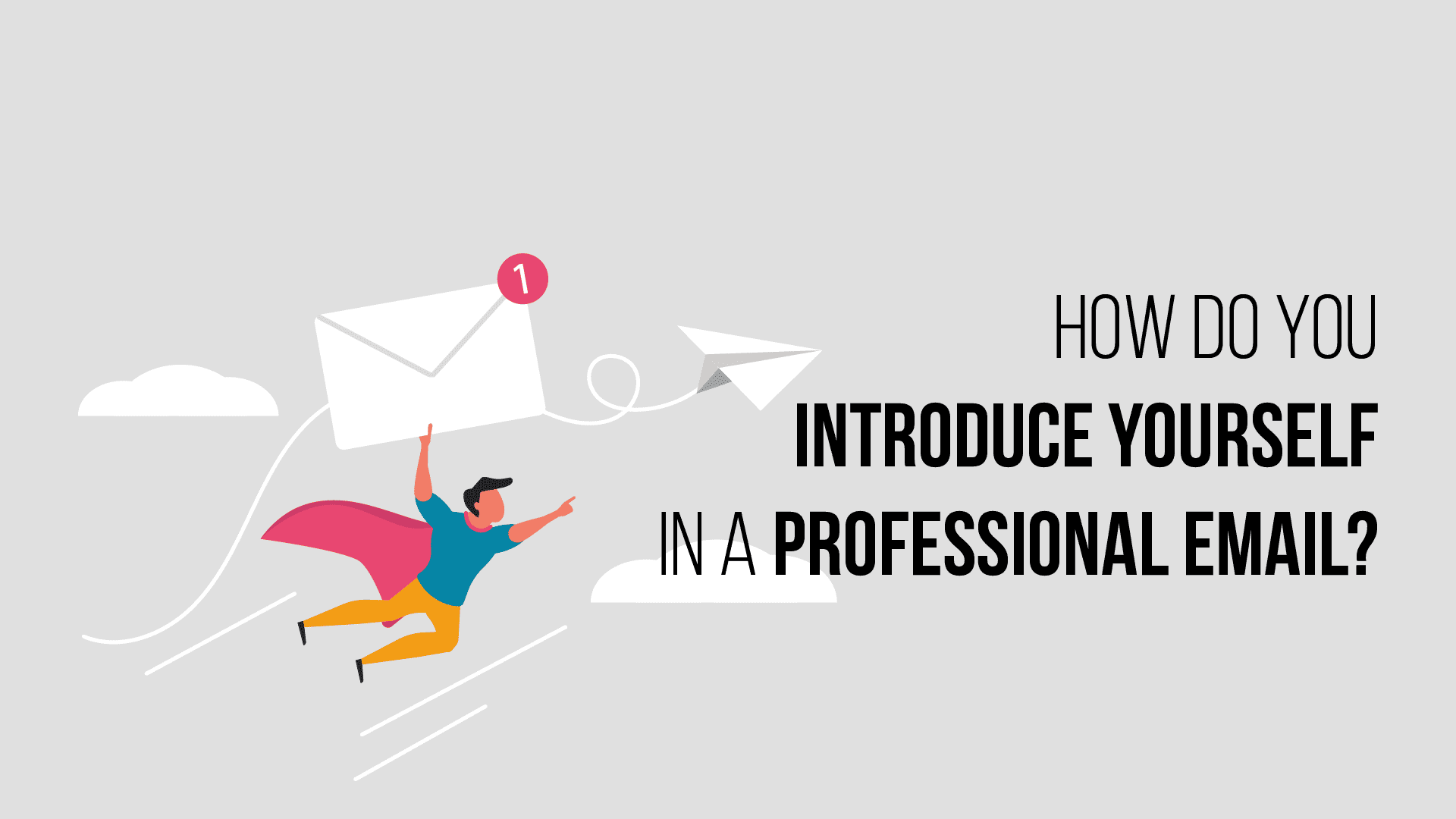How you introduce yourself in a professional email is extremely important. It gives the recipient an idea of who you are, what you want, and how professional you come across. Since most people skim through the email rather than read it (at least at first), it is critical that you convey your professionalism clearly and concisely.
Use these tips, tricks, and examples to ensure your next email introduction is not only opened and read but also makes a mark on the reader.
Topics Covered:
- Write a short, descriptive subject line
- Specify a person
- Lean on your personal network
- Stay clear and concise
- Never make demands
- Start with a professional greeting
- Introduce yourself
- Explain your reason for reaching out
- Close professionally
Tips & Tricks to Introduce Yourself in a Professional Email
Write a short, descriptive subject line
If the receiver does not know what the email is about, there is a good chance they will never open it. Keep your subject line short enough that most of it show in their preview panel (30 characters is a good general rule). Make sure your introductory email subject line clearly tells the viewer the purpose of the email. If you have a specific ask or offer for them, hint at it here. If not, something as simple as ‘Introduction- Jane Doe’ is sufficient.
Specify a person
Sending and addressing your professional introductory email to a specific person is always preferred over a general message. Rather than addressing the email to a department, try to find a certain person you can message directly and address by name. Whenever possible, lean on your professional network to figure out who best to contact or to do a professional introduction for you.
RELATED: 5 Soft Skills Employers Wish Tech Employees Had
Lean on your personal network
If you can get someone in your network to do the introduction, that is ideal. When that is not possible, though, don’t hesitate to name-drop. Mentioning someone you both have in common creates a sense of familiarity and gives your email recipient someone they can ask if they have questions. Be sure to mention that person’s name early on in your email, preferably in the first paragraph, making them more likely to see it and continue reading.
Stay clear and concise
Remember that most recipients are only going to skim through your professional introduction email. Make it easy to do so by only including 2-3 paragraphs with only 2-4 sentences in each. Your message should clearly and concisely tell them who you are, your purpose for emailing them, and what it is that you are looking for from them. That’s it.
Never make demands
Your introduction email usually is not the best time to ask for things, but sometimes there is no way around it. If you do require something from the recipient, be sure to suggest or make a polite request rather than stating a demand.
What to Include in a Professional Introductory Email
Start with a professional greeting
If you are writing to someone because of a mutual acquaintance, and the context is more casual, feel free to use first names. Usually, though, a more formal approach is best when you introduce yourself in an email for the first time. Find what title or pronoun the person uses to refer to themselves (Mr., Ms., Dr., etc.) and address them that same way.
Introduce yourself
The first paragraph should be 1-3 lines used to introduce yourself. State your name, title, or position, name the person who referred you, etc. The goal here is only to let the recipient know who you are.
Explain your reason for reaching out.
The second paragraph should be 2-4 lines and should tell the reader why you are contacting them. This paragraph should come across as welcoming and approachable, even if your reason for emailing them is to request something. Keep it short and to the point. If you have a preferred way you would like to be contacted, add it here. Otherwise, you can leave it out as your email signature below will give them all the options.
Close professionally
How you close your email introduction can be as important as how you open it. Leaving a positive final impression is critical. Close your email in a way that is consistent with the tone of the rest. Sincerely and Regards are two of the safest, most common ways to end a professional email. Closings like Best regards and With appreciation should only be used when the context is explicitly more casual. Avoid closings like Cheers or Take care that you would only use with a personal friend.
Final tips
- Send yourself a test message to preview before sending it to the recipient.
- Always blind carbon copy (BCC) yourself for future reference.
- Use spell-check, grammar tools, and proofread the email manually before hitting Send.
Are you looking for a job in Information Technology?
See all of our current openings here!
About the Company:
Peterson Technology Partners (PTP) has partnered with some of the biggest Fortune brands to offer excellence of service and best-in-class team building for the last 25 years.
PTP’s diverse and global team of recruiting, consulting, and project development experts specialize in a variety of IT competencies which include:
- Cybersecurity
- DevOps
- Cloud Computing
- Data Science
- AI/ML
- Salesforce Optimization
- VR/AR
Peterson Technology Partners is an equal opportunities employer. As an industry leader in IT consulting and recruitment, specializing in diversity hiring, we aim to help our clients build equitable workplaces.





 Work with us
Work with us